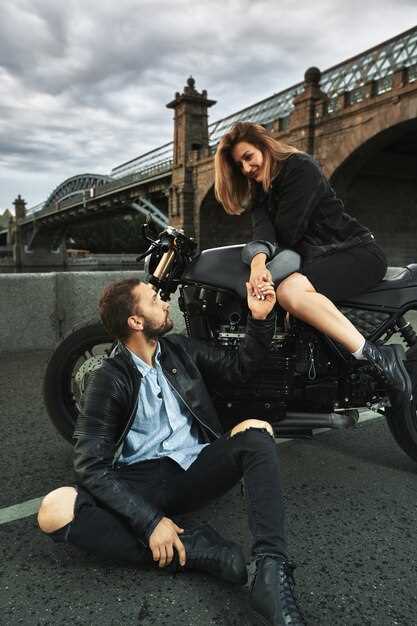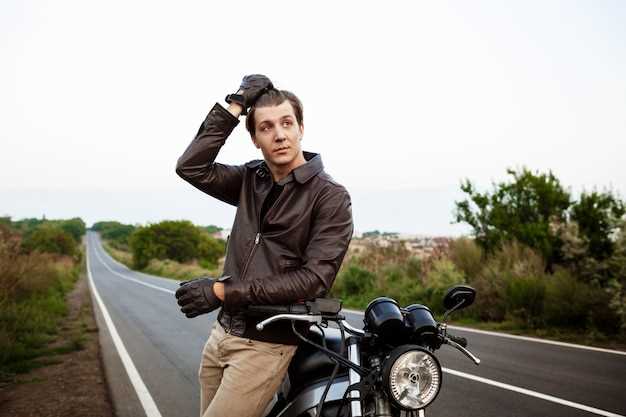
Capturing the thrill and beauty of motorcycle riding through photography is an art form that enhances the riding experience. For enthusiastic riders, learning how to take stunning photos of their moto adventures can elevate both their personal memories and their social media presence. This article presents essential tips that cater specifically to motorcycle enthusiasts, helping them create visually striking images that reflect their passion.
One of the key aspects of motorcycle photography is understanding the right angles and perspectives. Experimenting with different viewpoints can transform an ordinary shot into a mesmerizing image. Whether it’s a close-up of a bike’s details or a sweeping landscape shot with the motorcycle in the foreground, exploring various compositions can lead to unique results.
Additionally, the importance of lighting cannot be overstated in photography. Utilizing natural light, especially during golden hour, can enhance colors and add depth to images. Riders should also pay attention to the weather conditions, as they can dramatically affect the mood and tone of the photos. By following these tips and being mindful of their environment, motorcycle enthusiasts can capture breathtaking moments that truly represent the essence of their love for riding.
Choosing the Right Gear for Captivating Shots

When it comes to motorcycle photography, selecting the right gear is essential for capturing stunning images that resonate with the spirit of riding. Two primary components to consider are the camera and the lenses. A DSLR or a mirrorless camera provides the flexibility and image quality necessary to shoot in various lighting conditions, ensuring sharp details and vibrant colors that reflect the thrill of the ride.
For lenses, a versatile zoom lens, such as a 24-70mm or 70-200mm, can be invaluable. These lenses allow you to capture a range of shots, from wide-angle views showcasing the surrounding landscape to tighter frames that highlight the motorcycle’s design and details. Additionally, a fast prime lens, like a 50mm f/1.8, can be excellent for low-light situations or creating a beautiful bokeh effect, making your subject stand out even more.
In addition to cameras and lenses, consider investing in a sturdy tripod or a monopod. These tools can help stabilize your shots, particularly when shooting in low light or when capturing motion. A tripod allows for long exposures, which can beautifully convey the speed and dynamism of motorcycle movement. A monopod offers added stability while still allowing mobility during shoots.
Another important aspect of gear is filters. Polarizing filters can reduce glare and enhance colors, making sky blues pop and green grass appear more vibrant. Neutral density filters can help manage light when shooting with wide apertures or longer exposures, providing creative control over the final composition.
Don’t forget about your protective gear. Since you will be photographing motorcycles, ensure that you are equipped with appropriate attire, such as a helmet and durable clothing, to allow for both safety and comfort during rides. This gear not only protects you but also enables you to focus entirely on capturing those breathtaking moments.
Ultimately, choosing the right photography gear for capturing motorcycles involves balancing quality, versatility, and practicality. With the right equipment, you can ensure that every ride translates into captivating shots that embody the freedom and excitement of the moto lifestyle.
Mastering Composition Techniques for Motorcycle Photography

Achieving stunning motorcycle photographs hinges on effective composition techniques. Here are some essential tips to enhance your moto photography skills.
1. Rule of Thirds: This classic compositional guideline suggests dividing your frame into nine equal parts with two horizontal and two vertical lines. Position your motorcycle along these lines or at their intersections to create a more dynamic and balanced image.
2. Leading Lines: Utilize natural lines in your environment to draw the viewer’s eye towards the motorcycle. Roads, fences, and pathways can serve as compelling leading lines that enhance the sense of motion and adventure.
3. Framing: Incorporate elements from the surroundings to frame your motorcycle. Archways, trees, or even other vehicles can act as natural frames, directing attention to the subject and adding depth to your images.
4. Perspective and Angles: Experiment with various angles and perspectives. Shooting from a low angle can give your motorcycle a powerful presence, while a high angle may provide a unique overview of the scene. Try different heights to see what showcases your subject best.
5. Empty Space: Don’t be afraid of incorporating negative space around your motorcycle. This technique can emphasize the subject and evoke feelings of freedom and exploration, aligning perfectly with the spirit of riding.
6. Balance and Symmetry: Strive for balance within your composition. If your motorcycle is positioned on one side of the frame, consider including a corresponding element on the opposite side to create harmony. Symmetrical compositions can also be striking and draw the viewer’s eye directly to the motorcycle.
7. Timing and Light: Consider the time of day and how light impacts composition. Golden hour–shortly after sunrise or before sunset–offers softer, warmer light that enhances the motorcycle’s features and surrounding environment. Experimenting with light can dramatically change the mood of your images.
In summary, mastering composition techniques requires practice and experimentation. Utilize these tips to elevate your motorcycle photography and capture the thrill of the ride in every shot.
Utilizing Natural Light to Enhance Your Moto Images
Natural light plays a crucial role in motorcycle photography, allowing photographers to capture stunning images that highlight the beauty of both the bike and its surroundings. To master the art of utilizing natural light, it’s essential to understand the different qualities of light at various times of the day.
During the golden hour, which occurs shortly after sunrise and before sunset, the sun casts a warm, soft light that can transform your moto images. This time is ideal for capturing the essence of your ride, as the low angle of the sun creates long shadows that add depth and dimension. Position your motorcycle to take advantage of this light, ensuring that it highlights the bike’s lines and details.
Midday sun can be challenging due to harsh shadows and overexposure. However, it can also be utilized effectively. Try finding shaded areas or using reflective surfaces to diffuse the light. This technique can enhance the colors and textures of your motorcycle, resulting in a balanced and vibrant image.
The angle at which you shoot is vital when working with natural light. Consider how the light interacts with your subject. Side lighting can create dramatic effects, emphasizing the contours of the motorcycle, while backlighting can give a silhouette effect, adding a sense of mystery and adventure to your shots.
Experimenting with different weather conditions can also yield unique results. A cloudy day provides soft, diffused light that can minimize contrast and produce even tones, perfect for showcasing detailed close-ups of the motorcycle’s features. Rain can add an additional layer of interest, with reflections on the pavement and droplets clinging to your bike.
In conclusion, effectively utilizing natural light is essential for capturing exceptional motorcycle photographs. By understanding the time of day, manipulating shadows, and experimenting with various conditions, you can enhance your moto images and create powerful visual stories that resonate with fellow enthusiasts.

